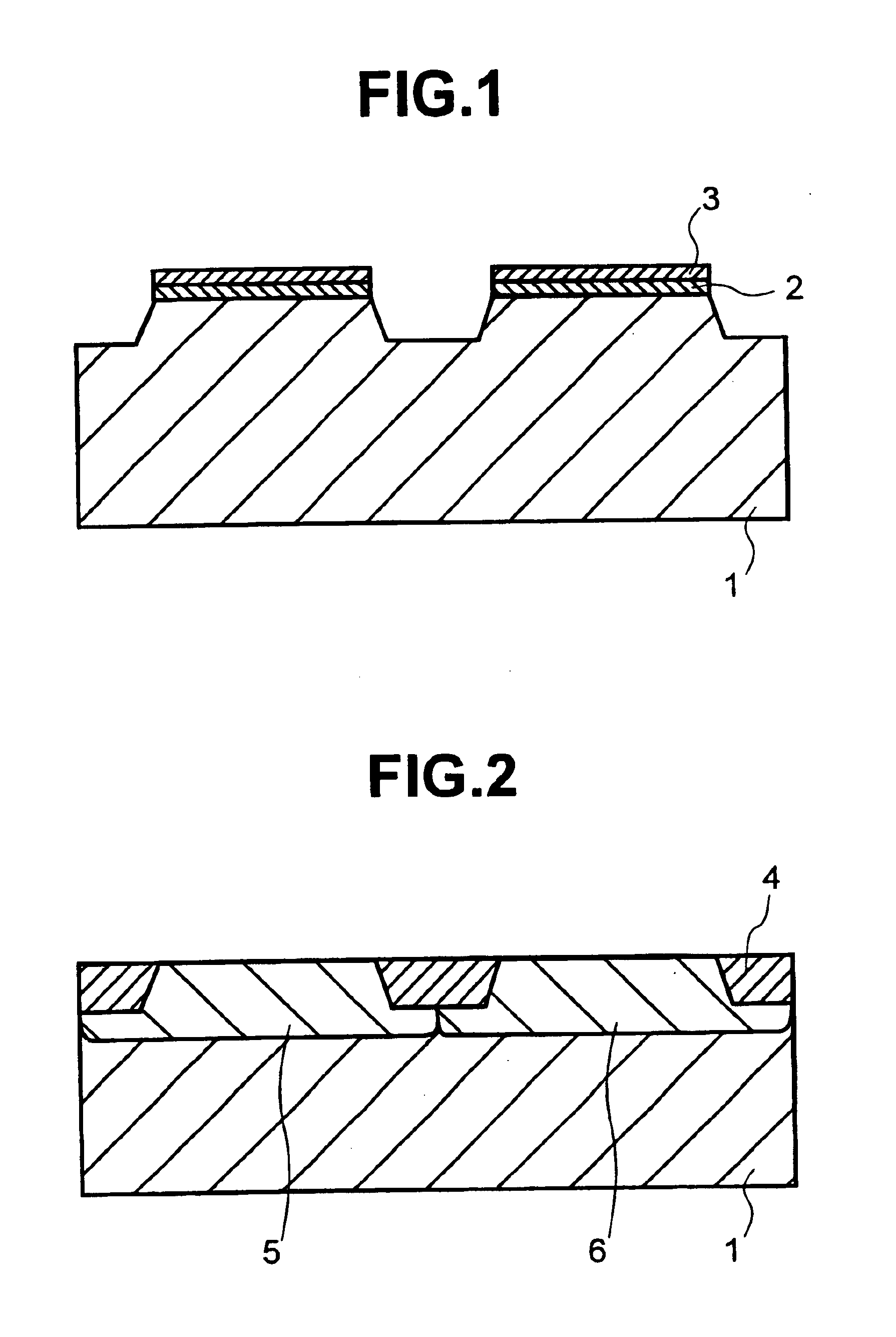MOS transistor apparatus and method of manufacturing same
- Summary
- Abstract
- Description
- Claims
- Application Information
AI Technical Summary
Benefits of technology
Problems solved by technology
Method used
Image
Examples
second embodiment
There follows a description of a method of manufacturing a CMOSFET using a fine polysilicon germanium film by supplying crystalline silicon fine particles according to the present invention. The methods for forming element separating grooves and wells are the same as those in the first embodiment, and hence they are omitted here and a detailed description of the polysilicon germanium film formation process is given.
In order to describe the benefits of the present invention, a comparison is made with the sequence for polysilicon germanium film formation based on supply of silicon fine particles according the first embodiment.
FIG. 29 shows a gas flow for CVD film formation according to the first embodiment. After heating a wafer to a film formation temperature of 500-800° C., the temperature is held at a uniform value for approximately 10 seconds, and then SiH4 gas is introduced into the film formation chamber. When a silicon film of approximately 3-10 nm has been formed, GeH4 gas is ...
third embodiment
There follows a description of a method of manufacturing a CMOSFET using metal gate electrodes, which represents an embodiment of the present invention. The methods of forming the wells and element separating grooves are similar to those of the first embodiment, and hence they are omitted here and a detailed description of the formation of the metal gate electrodes is given.
As shown in FIG. 40, a gate insulating film 7 comprising tantalum oxide is formed to approximately 5 nm by CVD on the surface of a p-type well 5 and an n-type well 6, and a gate electrode film 8 comprising tungsten is formed to approximately 50-100 nm by CVD. As shown in FIG. 41, a silicon nitride film 9 is deposited on the gate electrode film 8, and the silicon nitride film 9 and gate electrode film 8 are dry etched using a resist mask to form gate electrodes.
FIG. 42 shows a gas flow for tungsten film formation according to the third embodiment. The supply of WCl4 gas is hearted for a period, and WCl4 gas is sup...
PUM
 Login to View More
Login to View More Abstract
Description
Claims
Application Information
 Login to View More
Login to View More - R&D
- Intellectual Property
- Life Sciences
- Materials
- Tech Scout
- Unparalleled Data Quality
- Higher Quality Content
- 60% Fewer Hallucinations
Browse by: Latest US Patents, China's latest patents, Technical Efficacy Thesaurus, Application Domain, Technology Topic, Popular Technical Reports.
© 2025 PatSnap. All rights reserved.Legal|Privacy policy|Modern Slavery Act Transparency Statement|Sitemap|About US| Contact US: help@patsnap.com



